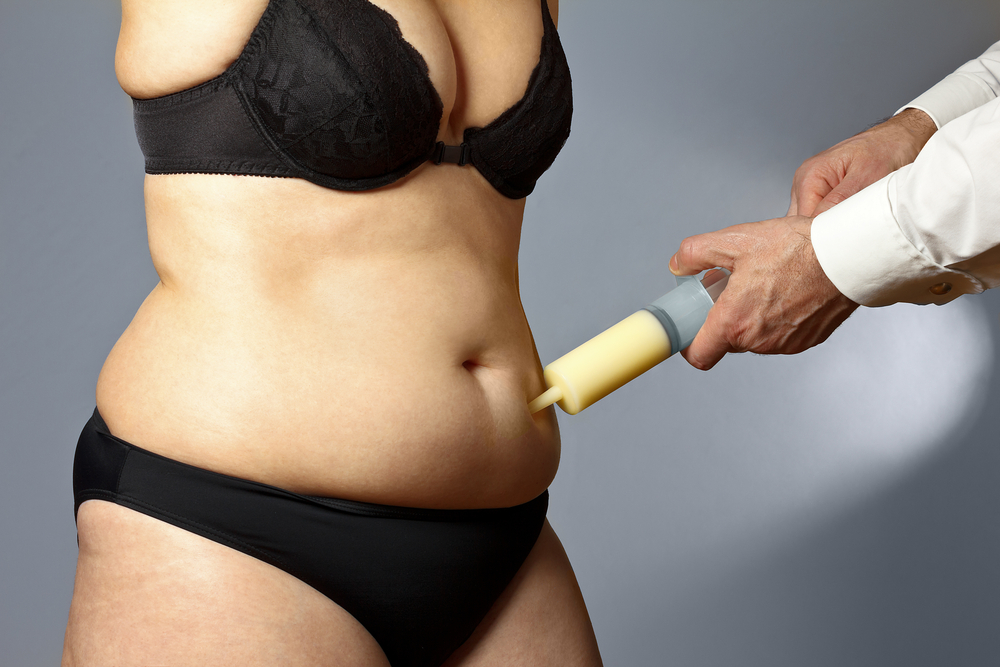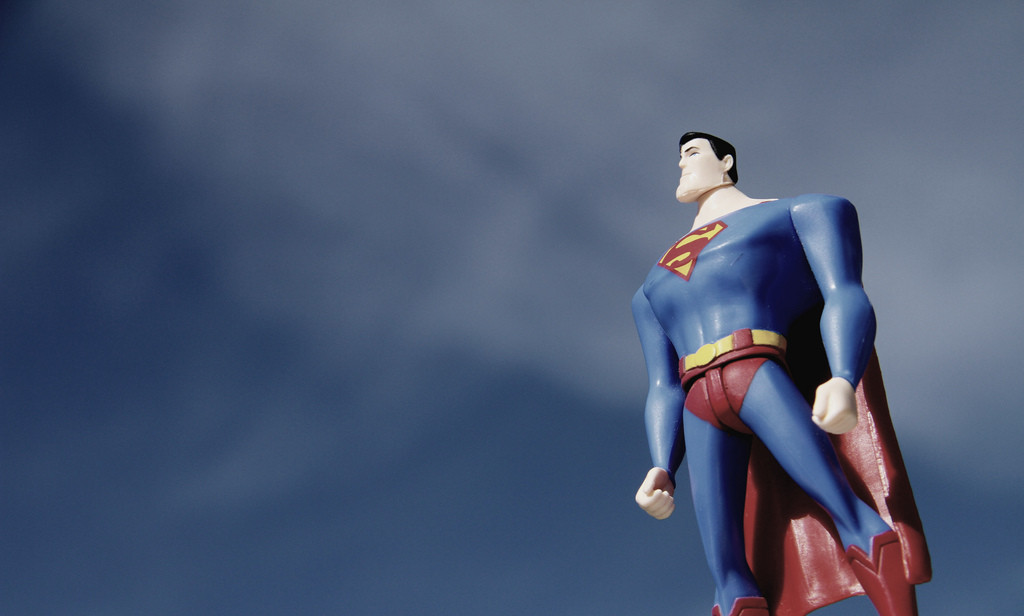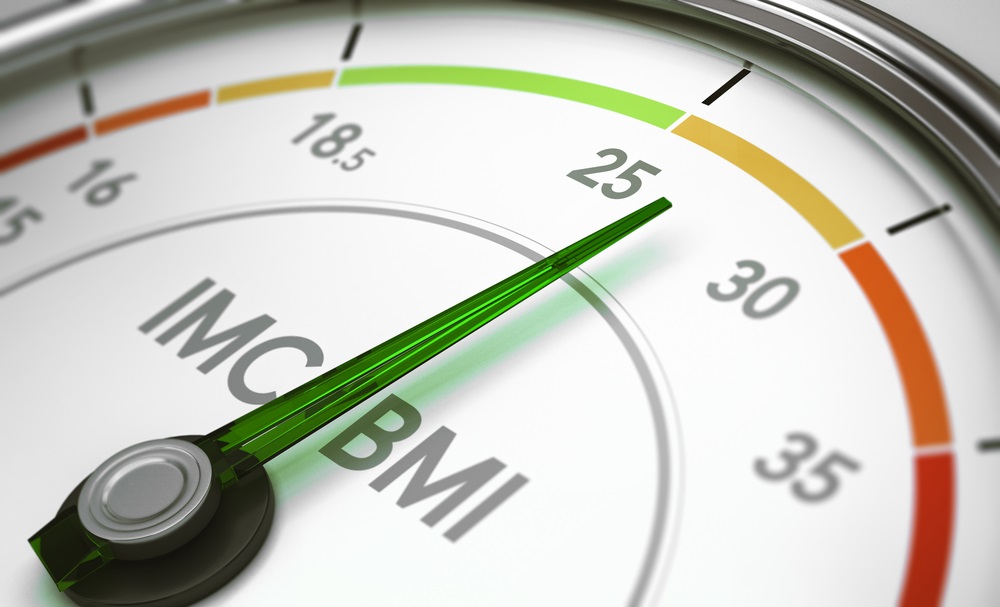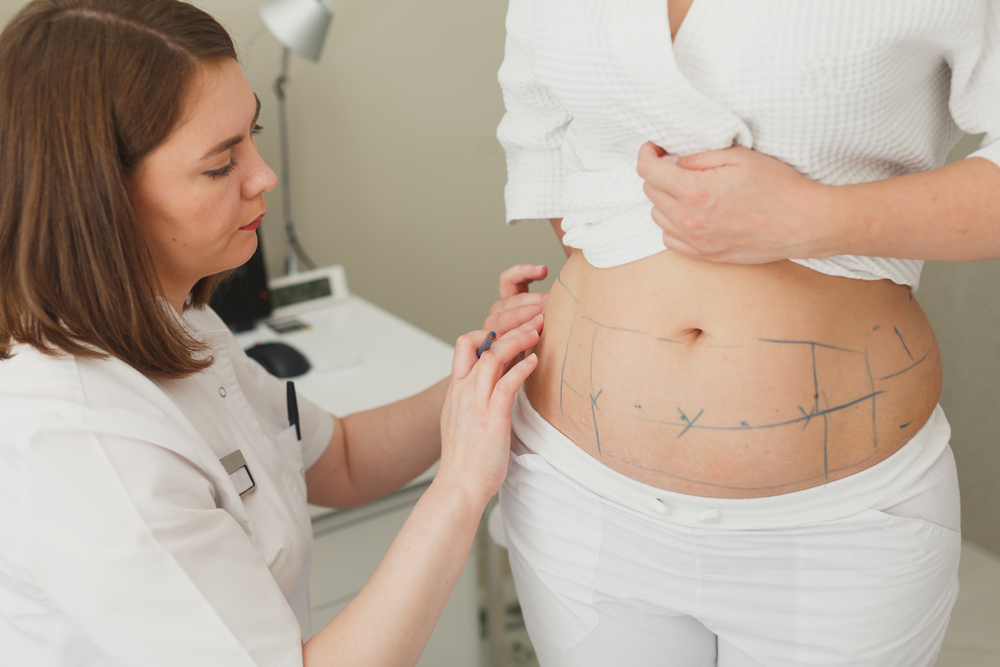A lower body lift, also known as a posterior body lift, is a surgical procedure performed to remove excess fat and skin of the lower back and lift the buttocks. The procedure is often performed on those who have experienced significant weight loss, causing excess sagging tissues as a result. It is best performed on those who are at or near their ideal weight.
If you suffer from sagging skin due to genetics, aging, or weight loss, a lower body lift can help you attain a more sculpted body contour by removing excess skin and fat from the abdomen, thighs, hips, and buttocks.
What Is a Lower Body Lift?
Advances in body contouring surgery have come a long way in recent years. The lower body lift represents one of the ultimate methods of dramatically contouring the lower body by removing loose skin from the waist, buttocks and lateral thighs, creating a firmer and more aesthetically pleasing silhouette.
The procedure is particularly popular among patients who have lost a significant amount of weight as a result of committed dieting, lifestyle changes, or bariatric surgery. For these individuals, weight loss sometimes leaves behind undesirable layers of skin which obscures the pounds that have been shed and inhibits self-confidence.
“People who lose 100 pounds or more feel healthier, they know they are healthier and they can do things they couldn’t do before. But when they look at their body it’s a constant reminder of how they were – and that can sometimes make it difficult to move on with life,” confirms Dr. J. Peter Rubin, Chair of the Department of Plastic Surgery at the University of Pittsburgh.
The lower body lift offers a method to address this excess skin, creating a sculpted and firmer lower body that enables patients to fit into clothes properly and feel confident. “Very often, it’s that final step in achieving the body that many people envisioned they would have when they signed on for weight loss surgery,” explains Dr. Stephen Colen, Associate Professor of Surgery and Plastic Surgery at New York University.
However, the procedure is also suitable for patients who suffer from thin layers of fat around their lower body, or have undesirable overhanging skin that causes chafing, rashes, irritation and limits mobility.
The Benefits of Lower Body Lift Surgery
A lower body lift offers a range of benefits, including:
- The removal of loose, sagging skin that obscures the results of weight loss.
- Sculpting and contouring the lower body region, restoring curves and streamlining the body profile.
- The excision of skin folds that rub together causing painful chafing, rashes or irritation.
- Improvement of mobility if movement has been hindered by excess skin.
- Clothing that fits better and looks more flattering.
- Lifting and firming of the skin around the abdomen, hips, thighs and buttocks.
- Enhanced self-confidence.
Am I a Good Candidate for a Lower Body Lift?
A belt lipectomy can immensely improve the appearance of your lower body if you have recently lost weight or suffer from lower body sagging due to genetics, aging or pregnancy.
The following criteria represent some of the main reasons you may wish to consider a lower body lift:
- You have experienced dramatic weight loss as a result of dieting or bariatric surgery.
- You feel frustrated by wrinkled or loose skin around your thighs, hips and buttocks.
- You have a weak abdominal wall, with hanging skin around your abdominal area.
- You have reached a stable healthy weight which you can maintain, and feel that a lower body lift would enhance the results of your weight loss.
- You have sagging skin (ptosis) on your hips, thighs, buttocks or abdomen.
- The fat beneath the layer of loose skin is relatively thin.
Ideal candidates for lower body lift surgery should:
- Be in a good state of general health, free from chronic health conditions such as heart disease or diabetes.
- Follow a healthy and nutritionally complete diet, as dieting or poor nutrition can hinder healing.
- Have a positive outlook: lower body lift surgery requires endurance and patience as recovery takes time and can be mentally taxing.
- Have realistic expectations about what surgery can achieve.
- Be a non-smoker, or prepared to quit at least six weeks prior to surgery: smoking has been linked to serious complications during and after surgery, and prolongs recovery.
- Be cognizant that a lower body lift will result in a potentially visible circumferential scar around the waistline.
Also note that some surgeons recommend postponing lower body lifts for up to two years after you first begin a diet or undergo bariatric surgery, giving the skin a chance to shrink.

RELATED: Plastic Surgery After Weight Loss — FAQs
Cost, Insurance and Financing
The cost of a lower body lift can vary as it is influenced by a variety of factors, including:
- The geographic location of your surgeon.
- The procedure or combination of procedures you undergo.
- Your individual physique and the extent of work you require.
- The reputation and expertise of your surgeon.
The American Society for Aesthetic Plastic Surgery (ASAPS) reported in 2015 that on average, a lower body lift costs $8,000. This does not include the cost of additional complementary procedures such as abdominoplasty or an inner thigh lift.
Generally, health insurance will not cover cosmetic procedures unless they deem them medically necessary. The lower body lift is unlikely to be covered by your insurer unless your physician or surgeon can meet strict criteria to prove that it is essential to the healthy functioning of your body.
If you feel that you would benefit from a lower body lift but believe it is financially out of reach, most surgeons and clinics offer financing plans to help make surgery a reality.
Choosing the Right Plastic Surgeon
A lower body lift is an extensive surgical procedure requiring a significant recovery period so choosing the right surgeon is the most important decision you will make. The ASAPS recommends carefully considering the following three aspects when you first begin your search for a surgeon.
1. Experience in lower body lift surgery
A lower body lift comprises a range of different procedures combined into one or several surgeries. Procedures may include the lower body lift in conjunction with liposuction, abdominoplasty (tummy tuck), or Brazilian Buttock Lift (fat grafting to buttocks).
Depending on the combination of procedures that you undergo, it is vital to choose a surgeon who is experienced, has a successful track record in performing those procedures and can help you attain the most beautiful outcome.
Ask to see before and after photographs so you can gain an idea of the kind of results you might expect and to confirm the surgeon’s proficiency and aesthetic approach.
2. Your rapport with the surgeon
Trusting your surgeon and their team is extremely important. You should feel at ease to communicate your preferences and desires and, in turn, they should be able to openly make recommendations and explain the most suitable options for you to achieve your goals.
3. Board-certification and training
Board-certification is widely acknowledged to be one of the most consistent measures of a surgeon’s skill, education, safety practices and training.
The most prestigious certification a plastic surgeon can attain in the United States is from the American Board of Plastic Surgery (ABPS), as it promises the most rigorous standards in patient safety and care, and requires that physicians keep up-to-date with the latest advances in surgery. You should also ask your surgeon where they trained and whether they have other specializations or hold any additional professional memberships.
Questions for the Initial Consultation
Your first consultation with a potential surgeon reveals a great deal, offering you a chance to get a sense of their professional manner, their recommendations regarding surgery, the types of post-operative care they provide, and the safety measures they practice to prevent complications.
Most significantly, the first consultation will help you to make an intelligent decision about whether to go forward with the procedure by informing you about your options, the risks involved, and the potential outcome.
Preparing a range of questions before your first consultation will help you to gain as much insight as possible from this initial meeting, which often comes at a cost. You may consider asking the following questions:
- Am I a good candidate for a lower body lift?
- Are the results I’m seeking reasonable and realistic?
- How many times have you performed lower body lift procedures?
- Do you have any special training or specialization in performing a lower body lift, abdominoplasty, liposuction, and/or inner thigh lift?
- Where would you perform surgery? Is the facility surgically accredited?
- Have you ever experienced a serious complication or had an emergency arise as a result of lower body lift surgery?
- Are there any risks I would face as a result of surgery?
- What is the total cost of surgery including anesthesia, facility fees, postoperative care and follow-ups?
- What type of post-operative care or follow-ups do you offer?
- What happens if I am dissatisfied with the results and require revision or corrective surgery?
Surgical Procedures and Options
In a lower body lift, the buttocks, outer thighs, backs of thighs and hips are lifted and firmed.
A long incision is made that extends around the lower torso. The length and pattern of the incision depends on how much excess skin needs to be removed and the location of that skin. There will be a scar that results from the circumferential incision. However, it is designed to be concealed beneath your underwear or bikini line.
The thighs and buttocks are then lifted and re-suspended via this incision, with the excess skin and fat layer trimmed and removed. The remaining skin and tissue is pulled upwards, tightening and firming the thighs and buttocks.
Generally, lower body lift surgery takes between 3-5 hours to complete. However, there is a recent trend towards two surgeons working on a patient simultaneously, meaning less time under anesthesia and a speedier recovery.
This procedure is usually performed in conjunction with complementary surgeries for the best possible outcome. Based on your individual physique, goals and budget, your surgeon will customize a treatment plan.
The following procedures are some of the more common lower body lift treatment options.
Abdominoplasty
When an abdominoplasty (tummy tuck) is performed during the same operation as a lower body lift, the procedure is called a total body lift, or belt lipectomy.
The tummy tuck is generally be performed after the lower body lift has been completed. The surgeon will turn you onto your back to trim excess skin flaps and contour the abdominal area, then carefully close the incision site around your torso with deep sutures to control stretching and swelling and minimize scarring. Drains are then inserted to allow excess fluid to leave the incision site.
Inner Thigh Lift
If you have already had a tummy tuck or do not need one, you may opt instead to complement your lower body lift with an inner thigh lift, also known as medial thighplasty.
Following the lower body lift, the surgeon will turn you over onto your back and make an incision from your inner knee up to the pubic region. Skin and fat are trimmed from the thigh muscles, with the skin then tightened and sutured closed. Drains are placed in each incision to allow fluid build-up to easily disperse from the site.
Liposuction
Some patients benefit from liposuction performed in conjunction with the lower body lift. Liposuction allows for the optimal contouring, smoothing and shaping of areas that have been lifted and tightened.
If your surgeon recommends a lower body lift with liposuction, they will perform a thorough examination prior to surgery and discuss the areas to be treated with you. In some cases, liposuction may be carried out before the lower body lift as a measure of addressing stubborn fat deposits.
Liposuction is performed prior to surgery as excess heaviness in the thighs and buttocks may impact the success of the procedure.
Brazilian Buttock Lift
A Brazilian Buttock Lift (BBL) entails the removal and harvesting of fat above and below the buttocks. The fat harvested from these areas (and often other areas like the abdomen as well) is then grafted into the buttocks to enhance and shape the contour. It is frequently done at the same time as a lower body lift.
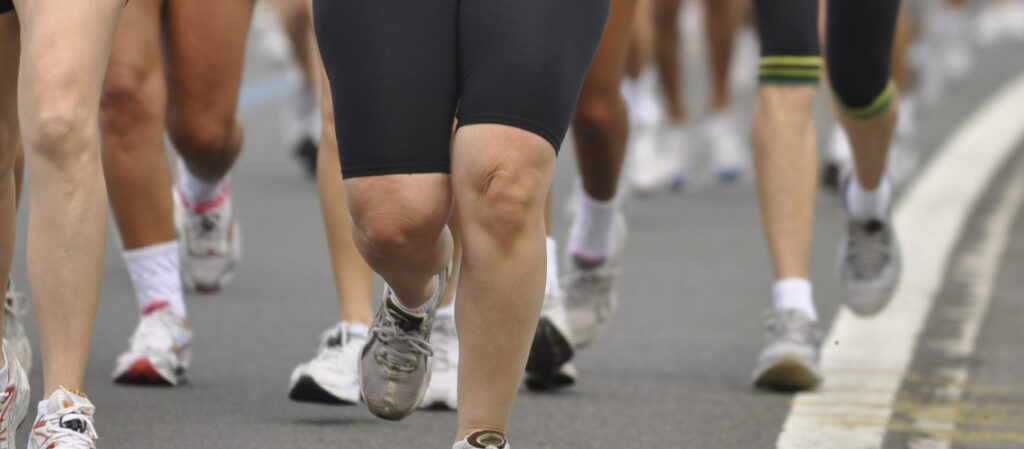
RELATED: How to Tighten Loose Skin After Weight Loss
Preparing for Surgery
In the weeks leading up to your lower body lift, your surgeon will provide you with a thorough list of preoperative instructions to ensure your surgery goes as smoothly as possible.
It’s also likely that you will be asked to undergo a physical exam and provide a detailed medical history to determine your fitness for the procedure. This provides your surgeon with all the information necessary to perform the lower body lift safely and optimize results.
Some of the most common recommendations given to patients to help them prepare for lower body lift surgery include the following.
1. You should have reached a healthy weight and maintained it for some time.
Maintenance of a stable weight is essential to ensuring you get the best possible results following surgery, as trying to slim down postoperatively can be detrimental to the final outcome. If you have previously undergone bariatric surgery, your plastic surgeon may wish to consult with your bariatric surgeon before the procedure to ensure you are ready for a lower body lift.
2. If you’re a smoker, you must give up smoking at least six weeks before surgery.
Smoking can hinder the healing process and elevate the risk of the occurrence of tissue death (necrosis).
3. Avoid taking blood-thinning medications.
Aspirin, certain anti-inflammatory medications, and herbal supplements can increase the risk of bleeding. Let your surgeon know all the medications and supplements you are currently taking so they can assess their safety and suggest an alternative if necessary.
4. Undergo blood tests.
Prior to undergoing a lower body lift, your surgeon will likely require that you have blood tests done to check on your blood counts, electrolytes, and possibly albumin to check on nutritional status.
Poor nutritional status will decrease your body’s ability to heal postoperatively. Hemoglobin levels are generally checked as it is not uncommon for patients who have undergone bariatric (weight loss) surgery to suffer from anemia. Iron supplements may be required for several days to weeks prior to undergoing a lower body lift to address this.
5. Prepare for your recovery at home.
A lower body lift is an extensive procedure that requires several weeks of rest and recovery. You will be unable to to lift heavy objects, drive or do household chores, such as laundry, during this time, and will require assistance caring for small children. You may wish to enlist the help of a friend or loved one to help you with day-to-day tasks and childcare, or arrange for skilled nursing care for the first few days after surgery.
6. Ensure you have plenty of nutritious, easy-to-prepare food at home.
Fruits, vegetables, foods with whole grains, nuts and healthy convenience foods such as soup or hummus are ideal. A wholesome diet helps your body to heal and will keep your weight steady. Salt increases swelling, so avoid salty or overly processed junk food.
7. Make sure you have as little to worry about as possible.
It is never a good idea to undergo an extensive procedure such as a lower body lift close to a stressful time in your life (for example, after a divorce or before a busy period at work).
Recovery from surgery can be mentally and emotionally taxing, so ensure you can take off plenty of time (four to six weeks is recommended) to rest without undue stress or strain. It may take several months before your energy levels return to normal and you feel like yourself again.
On the Day of Surgery
Follow these recommendations on the day of your lower back lift surgery to minimize discomfort and ensure the best possible outcome.
1. Shower on the morning of surgery.
It is important to arrive at the surgical facility clean, without any lotion, cream or deodorant on your body. You will also need to remove all jewelry, piercings and colored nail polish. In the days immediately following surgery, showering will not be possible, so take the opportunity to wash your hair and shower thoroughly beforehand.
2. Confirm your transportation arrangements.
Arrange for a family member or friend to drive you to the clinic or facility and collect you following surgery.
3. Fast before surgery to ensure you are not at risk while under anesthesia.
Your surgeon will specify when you should cease eating and drinking to ensure your safety during the lower body lift. Anesthesia is administered by an anesthesiologist or nurse anesthetist who remains present throughout the procedure. Monitors are used to check your heartbeat, blood pressure and oxygen saturation levels.
4. Be aware that surgery may deviate slightly from the agreed approach.
Your surgeon will follow the surgical plan discussed with you during the initial consultation. However, once the operation has begun, he or she may slightly shift from the plan by changing a technique or applying a different one to ensure the best results. For this reason, selecting a surgeon whom you trust is essential.
Lower Body Lift Recovery
Recovery from lower body lift surgery is a process which occurs in stages. You should expect to take four to six weeks to recuperate before returning to work and everyday activities. Your surgeon will give you comprehensive post-operative care instructions to follow that will help to accelerate your recovery and make it more pleasant.
Immediate Recovery
- For the first few days after surgery, it is likely you will be in a hospital or aftercare facility so you can be monitored and receive specialized nursing care.
- When the anesthesia from surgery wears off, it’s common to feel some pain. Oral pain medication will help to alleviate the pain as your body heals, particularly during the first few days after the procedure. However, if you experience extreme or prolonged pain, contact your physician.
- You will be given a postoperative compression garment to wear around your lower body to reduce swelling, support the newly repositioned and tightened tissue and smooth the skin. You will need to wear this for several weeks or until your surgeon advises otherwise.
- The nurses or staff present at the facility will teach you how to care for your surgical drains and help you get used to walking again. Moving around gently the day after surgery is imperative as it promotes blood circulation and lowers the risk of clots.
- You will notice redness and swelling around the surgical site. This is normal and may persist for weeks or even months after surgery. However, if you feel the swelling or redness is excessive, check with your physician; it may be a sign of infection or a seroma (fluid collecting under the skin).
Medium-Term Recovery
- Once you are discharged from the facility to return home, it will be your responsibility to keep the incision clean and dry, to empty and reset the drains and to take oral pain medication or antibiotics as prescribed.
- Ensure you have someone at home to help you. You will be unable to do anything strenuous and will need help with everyday activities for at least two weeks. If you have small children, place them in the care of a friend, loved one or nanny for at least two weeks.
- Check with your surgeon about the safest way to sleep to avoid placing excessive tension on your incisions. Finding the right sleeping position can reduce pain and help you avoid overly visible scars in the long run.
- Make sure you or the person caring for you is comfortable with emptying your drains daily. Your surgeon will also ask you to measure the quantity of fluid in your drains each day. When the output is low enough, the drains will be removed by your surgeon. Drains usually remain in the incision for two to three weeks.
- Honor all scheduled follow-up visits. During these consultations the surgeon can check on your progress and make adjustments to facilitate your recovery.
- Keep the incision site clean and dry. This minimizes the risk of infection. The stitches will be removed in your surgeon’s office, normally two weeks after surgery. In some rare cases, wound separation may occur which will necessitate further sutures and delay the healing somewhat.
Long-Term Recovery
- The circumferential incision around your torso may take four weeks or longer to fully heal. Although the scar will be permanent, proper scar management including scar creams and silicone sheeting can help it to fade over time. The scar can also usually be concealed by your clothing and underwear.
- You need to wait from six to eight weeks to resume exercise. In the interim period, it is important to engage in gentle movement and go for brief walks.
- Bruising will fade and should disappear after two weeks. Swelling will dissipate after a few months.
- Some discomfort is likely to remain for up to a month after surgery. When necessary, take oral pain relief as prescribed by your surgeon.
- Most patients return to work after four to six weeks. However, healing is a unique process and you need to listen to your body and take as much time as you need to recover—this may mean returning to work later than expected.
Risks and Complications
Fortunately, serious complications rarely occur as a result of lower body lift surgery. However, studies do show a greater level of risk for patients who have experienced massive weight loss. There are proven safety benefits to delaying a lower body lift for at least a year after bariatric surgery. Your surgeon will explain any specific risks you may face so you can make a well-informed decision prior to surgery.
Potential complications that can occur as a result of a lower body lift include:
- Wound separation
- Excess bleeding requiring a second surgery
- Hematoma (accumulation of blood under the skin that may require removal)
- Seroma (fluid build up under the skin that may require removal)
- Infection
- Raised, red or bumpy scars (keloids)
- Damage to the underlying tissue
- Numbness or changes in sensation around the surgical site
- Unsatisfactory results requiring revision or corrective surgery
- Blood clots
It is vital to point out that many of the risks listed above can be mitigated by using the services of a board-certified plastic surgeon and closely following their recommendations regarding preoperative and postoperative care.

RELATED: Seroma — Causes and Treatments
Results
For the most part, the results of a lower body lift are permanent. Your body may take several months to heal and adjust to its new shape, during which time the skin will relax a little.
However, your abdomen, thighs, buttocks and hips will remain contoured and tightened as long as you follow a healthy diet and exercise regime, and avoid prolonged sun exposure. In the long term, the natural aging process will mean some gradual loosening and sagging of the connective tissues.
Surgeons also advise that lower body lift results have far greater longevity for females when the surgery is performed once they’ve stopped reproducing and have reached their ideal weight. Gaining weight during pregnancy or weight fluctuations as a result of dieting will affect your results.
Patients who have undergone a lower body lift report high levels of satisfaction, with one survey conducted by the ASAPS noting that 96.2% of patients were satisfied with the results of their procedure. Another 2017 study found that lower body lift surgery enhances physical and mental well-being by improving self-image and reducing the discomfort associated with excess skin. Patients reported feeling happier, more attractive and more self-confident after surgery.
Lower Body Lift Surgery in 2017: Latest Advances
The lower body lift procedure is rapidly growing in popularity. As a result, new research is continually emerging and surgeons are consistently documenting innovative approaches to performing the procedure.
A 2016 study published in the Aesthetic Surgery Journal outlined several advances that are improving results for patients undergoing lower body lifts. One notable advance is the possibility of using lipoabdominoplasty in the place of abdominoplasty.
Lipoabdominoplasty combines liposuction with abdominoplasty and boasts decreased complications, such as problems with wound healing. It also achieves better aesthetic outcomes as it allows for improved contouring of the abdomen. Another noteworthy advance is using straighter incision lines for lower body lifts, resulting in more masculine silhouettes on men and curved lines for women for more feminine contours.
A 2016 report on lower body lift surgery in massive weight loss patients highlighted the need for special techniques to address the large volumes of patients’ lax and inelastic skin. The authors emphasize the importance of special preoperative and intraoperative planning to improve results. One particular technique highlighted as successful is the direct excision of bulges around the flank to yield better mid/lower torso contours.
Frequently Asked Questions
What procedures is a lower body lift comprised of?
The main objectives of a lower body lift are to trim excess fat and restore shape and firmness to the abdomen, hips, buttocks and thighs. To achieve this, a range of body contouring procedures may be used: a traditional lower body lift, abdominoplasty, inner thigh lift or liposuction.
I have undergone massive weight loss. Am I still a candidate for a lower body lift?
Individuals who have achieved massive weight loss can definitely benefit from lower body lift surgery. However, it is important to first consult with a surgeon to determine whether you may be at increased risk of complications as well as finding one who can devise a customized plan of treatment for you.
What types of post-operative complications can occur as a result of lower body lift surgery?
Some of the specific risks that have been associated with the lower body lift include bleeding, wound separation and seroma (fluid build-up under the skin). However, in the hands of an experienced board-certified cosmetic surgeon, the risk of complications is greatly reduced.
How much does a lower body lift cost?
On average, you can expect to pay $8,000 for a lower body lift. However, if you are including additional procedures such as abdominoplasty, inner thigh lift or liposuction, the cost will be significantly higher. A full body lift may cost up to $30,000 in total.
Who is a good candidate for a lower body lift?
Individuals who have undergone significant weight loss and suffer from loose skin around their buttocks, thighs, abdomen and hips are excellent candidates for a lower body lift. Those who have sagging skin in the lower body region due to genetics, aging or childbirth can also benefit from this surgery.






